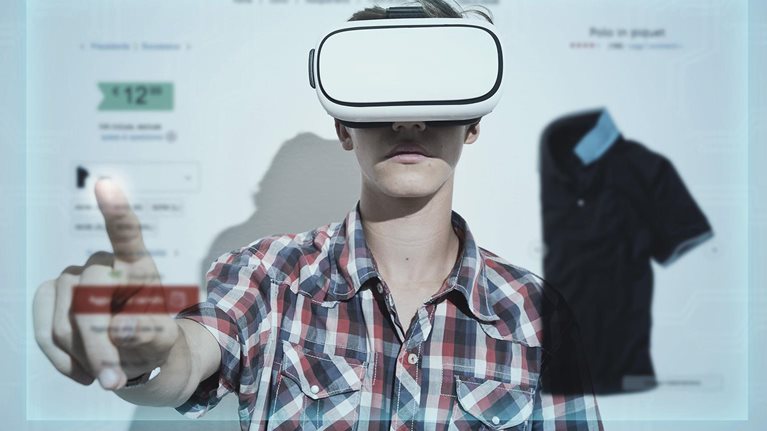Shoppers in mass-market categories tend to adopt new channels more readily than their luxury counterparts. But the COVID-19 pandemic forced even the most reluctant consumers to shop online. In some categories, when shoppers move online, brick-and-mortar stores become irrelevant. This is not the case in luxury. Despite a rise in e-commerce activity and a prolonged pandemic, a majority of consumers in the Japanese luxury market say they still prefer to shop in person. Increasingly, they see online channels as a complement to the offline experience. While they may research, evaluate, and, in some cases, purchase luxury products online, the offline experience and sales associate (SA) relationship remain as important as ever.
To better understand luxury consumer sentiments and behavior in Japan, we launched the East Asia Luxury Consumer Survey. In the field from March 2 to March 8, 2022, the survey garnered responses from 1,000 Japanese adults. We then conducted interviews with select consumers to verify our findings. We also spoke to a number of executives in the luxury-goods space to discuss trends and how brands are responding.
This article, based on those findings, provides insights into how luxury consumers in Japan are shopping two years into the pandemic. How geopolitical trends—such as the reopening of China and the war in Ukraine—and inflationary pressures will affect the luxury market in Japan remains to be seen, as these topics were outside the scope of this survey. But it’s clear that consumer behavior is fluid and that luxury brands need to adapt.
How luxury consumers are feeling and shopping
The COVID-19 pandemic forced consumers around the world online. In Japan, where online shopping prior to the pandemic was not as popular as it was in the United States, Europe, and China, the jump in digital activity is noteworthy. As the world continues to rebound from the impact of the COVID-19 pandemic, luxury consumers in Japan are gradually resuming their old shopping habits—but with a twist. While the in-store experience remains crucial, shoppers are increasingly turning to digital channels for information and brand interactions.
Luxury is on the rebound
The luxury market in Japan was hit hard by the COVID-19 pandemic. States of emergency and travel restrictions affected revenues, as did the sudden absence of Chinese shoppers. Since 2020, luxury has staged a gradual recovery across the globe; our research suggests that will continue.1 Drawing on insights from McKinsey’s FashionScope data, we expect the luxury market in Japan to grow by approximately 4 percent through 2025. We anticipate this growth will come from domestic shoppers, specifically younger and wealthier demographics. Consumer penchant for luxury (and discount) brands will come at the expense of the middle markets. Additionally, the eventual return of Chinese shoppers, along with gradual increases in the price of products, is expected to offset any persistent supply chain challenges and bolster luxury’s rebound in Japan.
Consumers are moving across channels
Two years into the pandemic, 41 percent of luxury consumers say they are researching and purchasing across channels. Increasingly, shoppers are turning to a variety of e-commerce and social media channels for inspiration, information gathering, and, in some cases, purchasing. More than 30 percent of consumers say that they compare products, pricing, and reviews on e-commerce platforms. When asked to identify their preferred online channel for information gathering, shoppers still visit a brand’s official website above all others.
In-store experience remains crucial
While luxury shoppers report moving freely among channels, nearly 80 percent say offline is part of their shopping journey (Exhibit 1). When asked about their most recent luxury purchase, shoppers still identify a brick-and-mortar store as the most influential source of information. But their motivations for visiting stores differ. According to luxury-goods experts, shoppers who make purchases less frequently value touch and feel. These shoppers want to physically handle a product and confirm its quality and fit. They believe they avoid mistakes by doing so. In contrast, more frequent luxury shoppers see the store and, in particular, the SA as a trusted source of personalized advice. One luxury shopper we interviewed characterized the SA as a critical relationship: “I am going to stores as if meeting close friends.”

The offline experience is evolving
Consumers may continue to favor the offline channel, but their expectations are changing. The COVID-19 pandemic and accompanying store closures forced brands to rethink the sales experience—including how and where it happens. Globally, luxury consumers still wanted to connect with their SAs during lockdown. Digital technology and communication channels offered SAs new ways to interact with customers. According to Ian Rogers, the former chief digital officer at LVMH, messaging apps and other digital solutions became important sales channels during the pandemic: “We know that people want to speak with sales associates from their phones and their living rooms. They want to receive their product in a luxury way at home, they want great services when they do curbside pickup, and they want a video walk-through of the collection by the sales associates.” In response, leading luxury brands are investing in the SA role and rethinking fulfillment. Some retailers are doubling down on the in-person sales experience. Our research shows they are right to do so, given that three of the six most appreciated brand interactions involve the SA role (Exhibit 2). Although not new to Japanese culture, the gaisho2 has reemerged as a way to expand customer interactions and sales beyond the store. Department store Daimaru Matsuzakaya projects that gaisho will account for 30.0 percent of sales in 2024; it accounted for 23.7 percent in 2020.3

How luxury brands and retailers can respond
As luxury consumers in Japan traverse multiple channels and channel boundaries become blurred, how can luxury brands keep pace? How can they cater to evolving consumer preferences and simultaneously preserve brand strength? Our research suggests that leading luxury brands think strategically about which channels help them reach their target consumers and provide customers the omnichannel shopping experience they expect. At the same time, leaders identify the channels that help them retain control over brand experience, messaging, pricing, and inventory. Companies can start by focusing on a few key areas, as described below.
Join the local conversation
Without international shoppers from China—and with the future of travel uncertain—brands are focusing more heavily on domestic shoppers. Luxury brands feature prominently in local chatter on social media channels, regardless of whether the brand has an official presence. Brands that do not engage on local channels run the risk of letting others control their messaging. In Japan, some luxury companies (including Gucci, LVMH, and Prada) have launched official accounts on popular local messaging apps such as LINE. They feature well-known local celebrities and influencers and provide more tailored information about store-based campaigns and new-product releases. Some brands have gone a step further and built regional accounts on both local and global social media platforms.
For example, Longchamp is tailoring both online and offline channels to local customers and, at the same time, addressing decision fatigue. Japanese shoppers in our survey said they had some difficulty selecting products when presented with many options and tended to lean on the recommendations of store staff. To ease the process, Longchamp has launched support services on LINE, on its Japanese website, and at offline store events. Customers using LINE answer a few questions and then receive a message with product recommendations; products can be ordered online or offline.
Craft a seamless customer journey
A successful omnichannel shopping journey is seamless. Shoppers should feel that the journey is consistent, cohesive, and navigable whether they’re in a physical store, browsing a digital storefront, or in the metaverse. Increasingly, shoppers also expect all channels to reflect the attention to detail and personalization they have come to rely on in stores.
Through our analysis of leading brands, we identified three actions luxury companies can take to deliver a consistent experience: cocreate new luxury experiences with digital companies, launch online sales teams to support shoppers, and use cross-channel data to enrich the customer experience.
Cocreate new luxury experiences with digital companies. By leaning into digital innovations, brands can create the consistent and personalized experience luxury consumers are seeking. Online shopping through augmented-reality (AR) and virtual-reality (VR) apps brings the luxury experience into consumers’ homes, where they can interact virtually with an SA and try on products (Exhibit 3). Some retailers are taking personalization and service a step further by investing in digital mirrors and fit technology (for example, Modern Mirror’s Avant-Garde Fitting System), which scans individual customers using medical-grade imaging. After capturing the individual’s shape and size, the retailer stores the information in the customer’s profile. The customer can then use that information to guide purchasing decisions online or in stores.

For example, LVMH Japan’s recently announced partnership with SoftBank is expected to enable the use of VR and next-generation network technology to tell brand stories and provide consumers with unique experiences, such as a chance to connect virtually with LVMH artisans in their workshops. Isetan Shinjuku launched a smartphone app called REV WORLDS where customers can experience the virtual city of Shinjuku and shop at a virtual Isetan store.
Launch online sales teams to support digital-first shoppers. As more luxury shoppers embrace e-commerce, luxury brands must be poised to provide robust online sales support. Premium brand Swarovski offers a potential playbook for luxury brands. During the pandemic, Swarovski launched virtual visits to Swarovski’s flagship store in the Ginza district of Tokyo. During these one-on-one visits, shoppers explore the Ginza store, view its specific product collection, and have the SA’s full attention. The brand reports that customer satisfaction with the experience is more than 80 percent and that the purchase rate is as high as 80 percent.4
Use cross-channel data to enrich the customer experience. Shoppers who move freely among channels provide data on their preferences and behaviors. Leading luxury brands and retailers lean on this information when designing complementary experiences. For example, a top Japanese department store uses data to enhance the shopping experience for customers with an annual spend of ¥1 million ($6,910) or more. Originally, each customer was assigned a dedicated SA who had experience working with the customer, but in recent years, the company has shifted to a team model. Using shared data, the team offers these customers visits to luxury-brand showrooms and special access to runway collections and haute couture. Customers are encouraged to enjoy art, food, and other special experiences while shopping. This company has seen out-of-store sales grow by 10 percent since it introduced this new model.
Recast the store
With luxury shoppers continuing to experiment across channels while preferring brick-and-mortar stores, leading luxury brands are doing the same. A number of brands are reviewing their retail operations with an eye for streamlining and centralizing as much as possible so that SAs have the capacity to focus on customer service (see sidebar, “How to simplify store operations”). Others are carefully reconsidering the role of the store for each customer segment and defining how the brand engages with each segment in the store. Some luxury brands are differentiating service levels for VIP consumers by offering them exclusive access to VIP-only stores and SAs.
A few leading brands have merged online and offline into a new kind of store. The purpose of the store is not to sell products in store but to increase digital sales. Customers can compare stock in other cities and order products in real time through digital channels in the store. Using extended reality (XR), digital mirrors, and fit technologies, customers can visualize themselves in any place at any time wearing any product. Japanese luxury fashion brand Yohji Yamamoto offers an example of a store merging online and offline. Inside the store, large digital signage introduces new products and reports fashion news. The brand also hosts art exhibits featuring photographs and paintings that can be purchased at the store.
Luxury shoppers in Japan have not been as quick to embrace online shopping as those in China, Europe, and the United States. Still, the COVID-19 pandemic accelerated the adoption of e-commerce in Japan. Two years into the pandemic, luxury shoppers say they still prefer a physical touchpoint in their shopping journey. The most successful luxury brands are taking steps to preserve that. Simultaneously, brands are actively innovating digital offerings so consumers can move freely among channels—and still receive the personalized attention they value.


